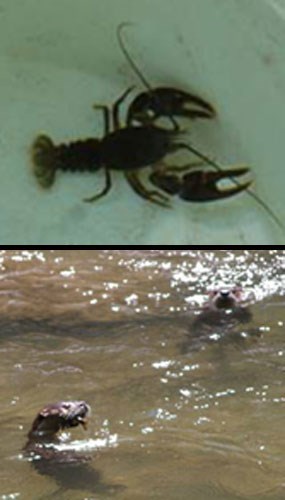
National Park Service Photo You’re Correct! Otters were introduced in 1992, but have had no significant impact on trout populations in Great Smoky Mountains National Park. Crayfish are the primary food source for otters in the park. Fish were present in 50-90% of otters stomachs examined, but these were mostly northern hogsuckers, white suckers, and stonerollers. Otters can have a major impact on fish hatcheries, fish ponds, and other closed systems. In the wild, Mother Nature’s floods and droughts have a much greater impact on fisheries than otters, fishermen, etc. |
Last updated: April 14, 2015
